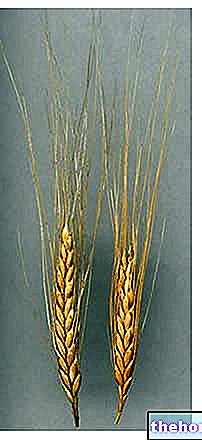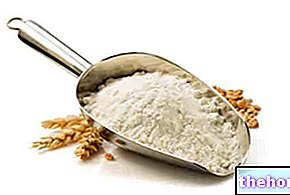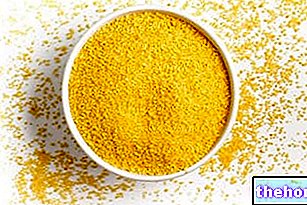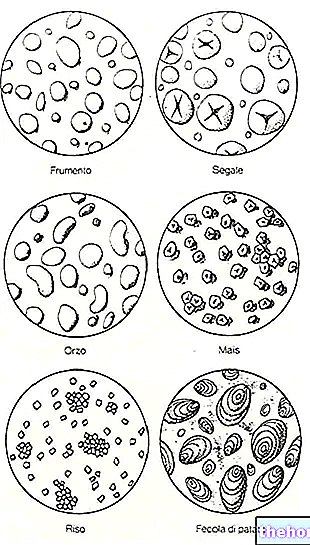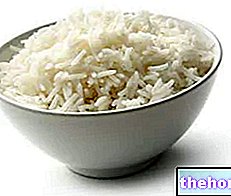Generality
Tigelle or crescentine are a typical food of the Emilia-Romagna region, in particular of the province of Modena. They belong to the category of bread and derivatives, since they are obtained from the formulation of a leavened dough based on wheat flour and water;

Etymology: over the years, by metonymy, the term "tigelle" has replaced the real name of this food, or "crescentine"; the rhetorical mutation of the noun "tigelle" occurred with the propagation of the food itself, originally consumed only in the vicinity of the Modena hills, but then disclosed throughout the regional plain and in the neighboring territories. A first analysis shows no concrete reason for which it was necessary to exchange "the contents for the container", but this is not the case; in the eastern territory near the Modena area, in the province of Bologna, a food is consumed homonym but different in composition and cooking process: a fried pasta called "crescentina". For this reason, everywhere except in Modena, crescentina means a Bolognese food based on fried dough, while the term "tigella" indicates the small disks of Modenese bread to be cooked in the special terra cotta tool or grilled.
Recipe
The contemporary tigelle or crescentine can be produced following different types of recipes, while the culinary procedure always remains the same. On the other hand, the traditional formula of tigelle or crescentine speaks clearly: white wheat flour (type 00), water, natural yeast, lard, salt and lard. NB. Some use a part of milk instead of water and others they use brewer's yeast instead of sourdough (or mother yeast); frequent use of sugar.
It is however necessary to specify that, following a global awareness in the health sector, the traditional recipe of tigelle or crescentine has undergone some radical changes (even if the supporters of the "Modenese crescentina" jealously preserve every detail of their typical food) The essential modification that many companies and artisans have decided to make to the recipe for tigelle is the replacement of animal fats present in the mixture (lard) and those added for cooking (lard) with extra virgin olive oil. By means of this expedient it is possible to eliminate the cholesterol content and drastically reduce that of the saturated fatty acids in the finished product, all to the advantage of the overall healthiness of the tigelle.
Another "clarification concerns the yeast to be used; given the" age "of the tigelle or crescentine, it is conceivable that the leavening medium was originally made up of sourdough; today, for convenience and practicality, tigelle or crescentine are also obtained by using brewer's yeast, while chemical yeast (as well as preservatives) is a yeast used exclusively by industrial producers.
As anticipated, the procedure for tigelle or crescentine is always the same:
- Dissolve the sugar and salt in one part of water / milk and the brewer's yeast in another
- Compose a fountain with the flour on a pastry board
- In the center, pour: the water / milk with the sugar and salt, the liquid with the levito and the oil or softened lard into small pieces.
- Knead vigorously and place in a floured bowl covered with a damp cloth.
- Leave to rise until doubled in volume.
- Divide the dough into loaves and, one by one, roll them out into sheets with a thickness of about 1 / 2cm or 1cm; with a pastry cup, separate some discs with a diameter of about 10cm.
- Cook the discs in a lightly greased tigella (or in a metal tigelliera or on the plate or in a pan) (with oil or lard), turning them often.
Regarding the ingredients of tigelle or crescentine, we bring a couple of examples:
Recipe 1 - traditional: flour type 00 500g, brewer's yeast 25g, water 200g, lard 80g, salt to taste; lard for greasing.
Recipe 2 - healthier: flour type 00 600g, brewer's yeast 25g, cow's milk 150g, extra virgin olive oil 30g, sugar to taste, salt to taste; oil for greasing.
Tigelle - Crescentine Modenesi
Problems with playing the video? Reload the video from youtube.
- Go to the Video Page
- Go to the Video Recipes Section
- Watch the video on youtube
A variation of local tigelle is the Batbout, a really good Moroccan bread baked in a pan, don't miss the video recipe
Nutritional properties
First of all, we reiterate that, as they contain gluten, tigelle are not suitable for the diet of celiacs. Furthermore, those prepared with milk do not even lend themselves to the diet of lactose intolerant subjects.
Tigelle or crescentine are baked products belonging to the whole of cereals and derivatives, therefore to the III group of foods. They have a very high energy intake (given above all by complex carbohydrates) and not suitable for ordinary nutrition (especially for subjects in overweight). Also, due to the considerable glycemic load, large portions of tigelle are NOT recommended for people with type 2 diabetes mellitus. NB. Recipes that use sugar have a higher fraction of simple carbohydrates.
The lipid profile of tigelle or crescentine varies according to the recipe; those that require the use of lard bring significant quantities of cholesterol (not visible in the table below) and saturated fatty acids, which is why they should be avoided in the diet of those suffering from hypercholesterolemia; on the other hand, those based on extra virgin olive oil of olives do not have the same negative implications, even if the equally high caloric intake still requires an occasional and moderate consumption.
The proteins of the tigelle or crescentine are scarce and of medium biological value. The quantity of dietary fiber is comparable to that of common bread while the water intake is erroneously high, as the table does not take into account the dehydration that occurs during cooking.
As far as the mineral salts are concerned, there are no considerable concentrations, while as regards vitamins, the quantities of thiamine are always discrete; for tigelle with lard, those of niacin seem good and the amount of retinol equivalent in the crescentine with milk is equally satisfactory.
Naturally, the nutritional contribution of a possible filling must also be considered, which can range from sauces to cured meats, from spreadable cheeses to vegetables, significantly affecting the nutritional contribution of the dish. The combination of tigelle - lean cured meats (bresaola, defatted raw ham, turkey breast) and vegetables (zucchini, peppers, rocket, valerian ...) is certainly preferable to that of tigelle and fatty cured meats (salami, bacon, coppa, mortadella), full-fat or semi-fat cheeses (stracchino, philadelphia, gorgonzola ...), mayonnaise, jam or chocolate.
Nutritional values

Other Cereals and Derivatives Amaranth Wheat starch Corn starch Rice starch Modified starch Oat starch Bulgur Whole grains Corn Flakes Crackers Oat bran Bran Cus cus Amaranth flour Oat flour Buratto flour Spelled flour Buckwheat flour Corn flour Corn flour Millet Barley flour Quinoa flour Small spelled flour (Enkir) Rice flour Rye flour Sorghum flour Flour and semolina Whole wheat flour Manitoba flour Pizza flour Spelled Rusks Focaccia Nuts Wheat or wheat Wheat germ Burnt wheat Buckwheat Breadsticks Oat milk Rice milk Corn Maizena Malt Millet Muesli Barley Stale bread Unleavened bread and Pita Bread Carasau bread Egg pasta Rice pasta Wholemeal pasta Piadina Small spelled Pizza Pop corn Baked goods Quinoa Rice Basmati rice Converted rice White rice Rice Wholemeal Parboiled Rice Puffed Rice Venus Rice Rye and Horned Rye Semolina Semolina Sorghum Spaghetti Spelled Teff Tigelle Triticale OTHER ARTICLES CEREALS AND DERIVATIVES Categories Food Alcoholics Meat Cereals and derivatives Sweeteners Sweets Offal Fruit Dried fruit Milk and derivatives Legumes Oils and fats Fish and fishery products Salami Spices Vegetables Health recipes Appetizers Bread, Pizza and Brioche First courses Second courses Vegetables and Salads Sweets and Desserts Ice creams and sorbets Syrups, liqueurs and grappas Basic Preparations ---- In the Kitchen with Leftovers Carnival Recipes Christmas Recipes Dietary Recipes Light Recipes Woman's Day, Mother's Day, Dad's Day Functional Recipes International Recipes Easter Recipes Recipes for Celiacs Recipes for Diabetics Holiday Recipes Valentine's Day Recipes Vegetarian Recipes Protein Recipes Regional Recipes Vegan Recipes

